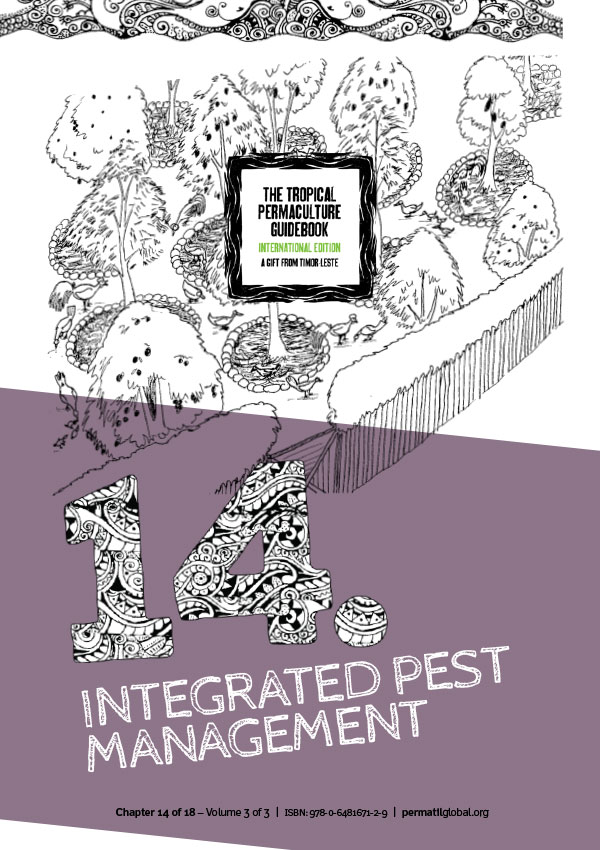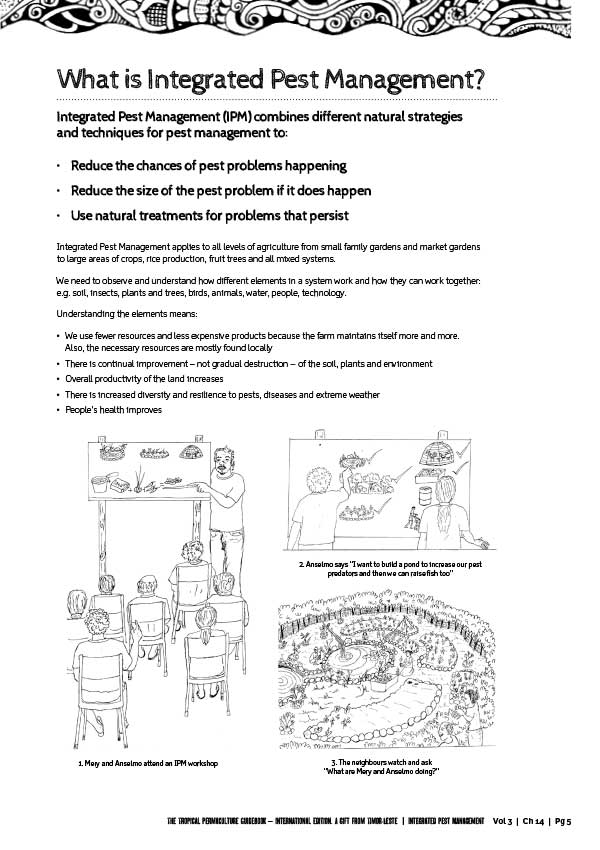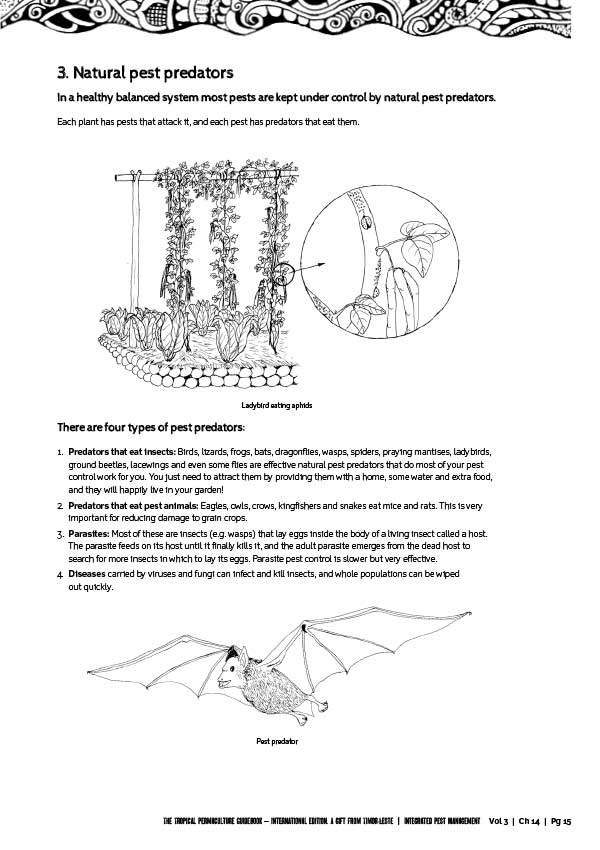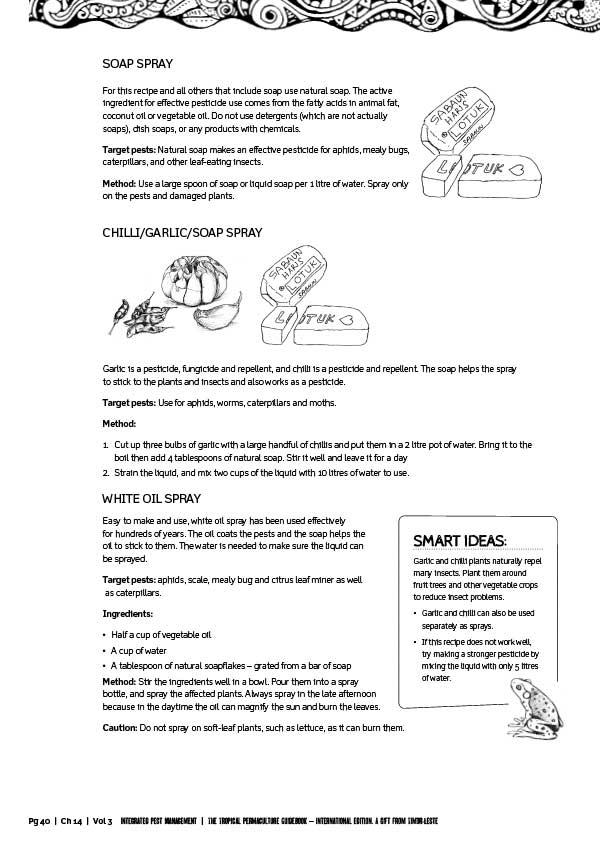Chapter 14. Integrated pest management
68 pages
Long-term pest and disease management solutions must bring back a natural balance between agriculture, gardens and the natural environment… more
This chapter is available in two sizes:
6.1MB (slow internet connection)
11.9MB (fast internet connection)
Long-term pest and disease management solutions must bring back a natural balance between agriculture, gardens and the natural environment. Scientists have known for a long time that over 90% of insects are actually harmless or beneficial to crops and other plants. Now they realise that this is similar for bacteria and fungi. We need them in the garden and in the soil to maintain good production, so we must use natural growing techniques!
Every element of the environment – and that includes us – is connected to every other part. What happens to one element affects every other element of the system or environment. This is an important philosophy behind IPM and future sustainability.
Integrated Pest Management (IPM) combines different natural strategies and techniques for pest management to:
- Reduce the chances of pest problems happening.
- Reduce the size of the pest problem if it does happen.
- Use natural treatments for problems that persist.
IPM applies to all levels of agriculture from small family gardens and market gardens to large areas of crops, rice production, fruit trees and all mixed systems.
Contents include:
- What is Integrated Pest Management?
- IPM strategies and techniques
- Importance of healthy living soil
- Best growing conditions
- Natural pest predators
- Healthy environment
- Use non-hybrid, open pollinated seeds
- Good crop management
- Preventative measures
- Using chickens and ducks for pest control
- Natural pesticides
– Natural fungicides
- Other pests






